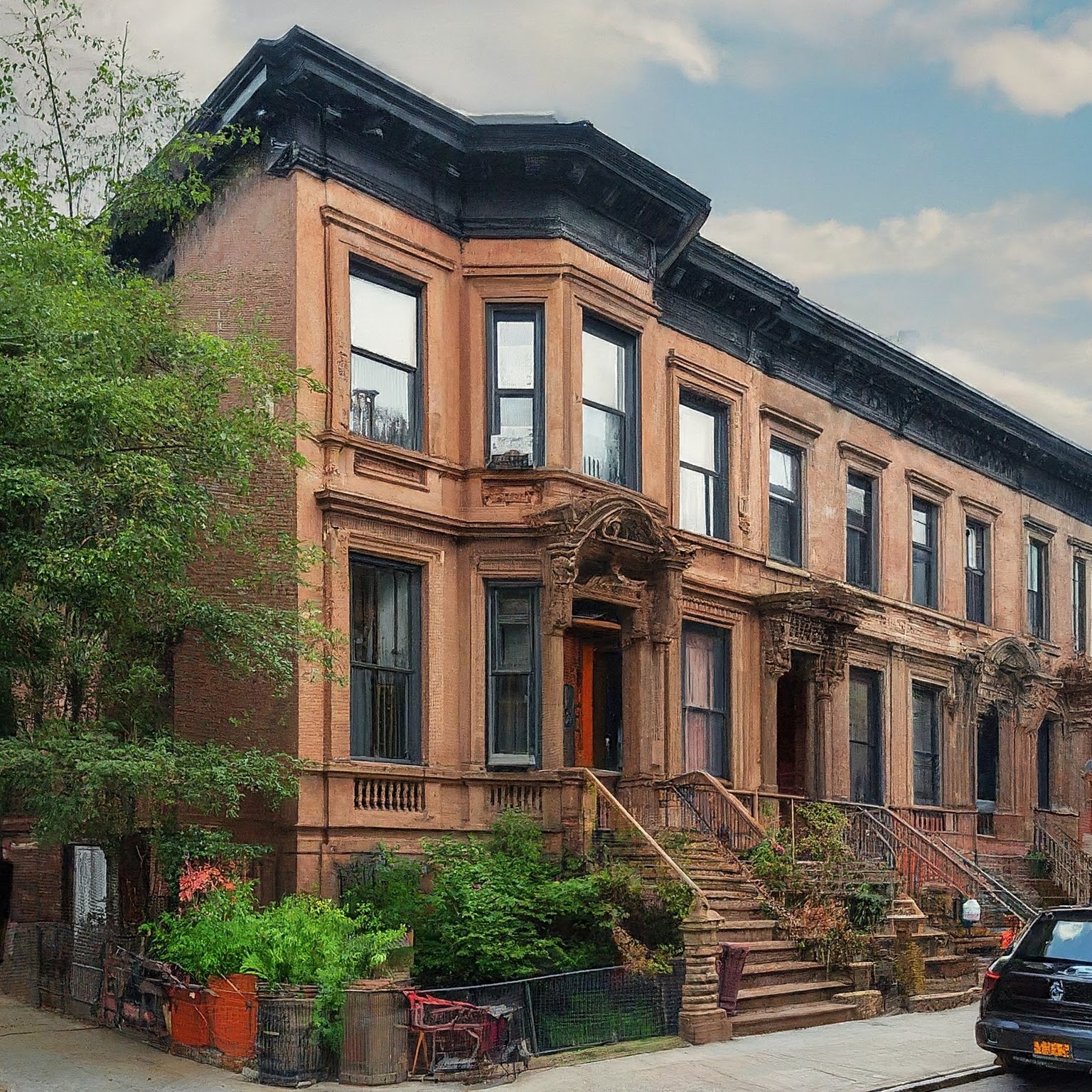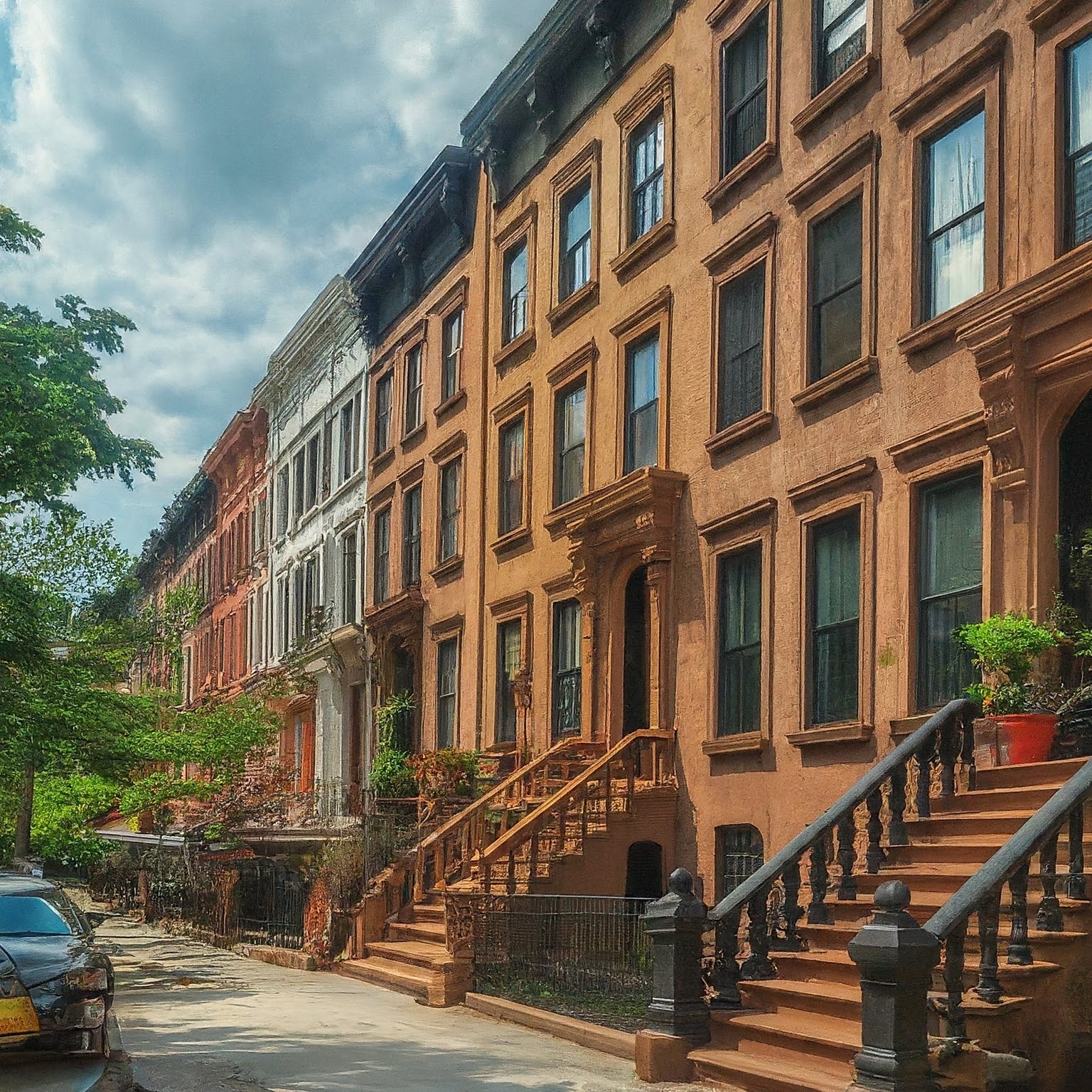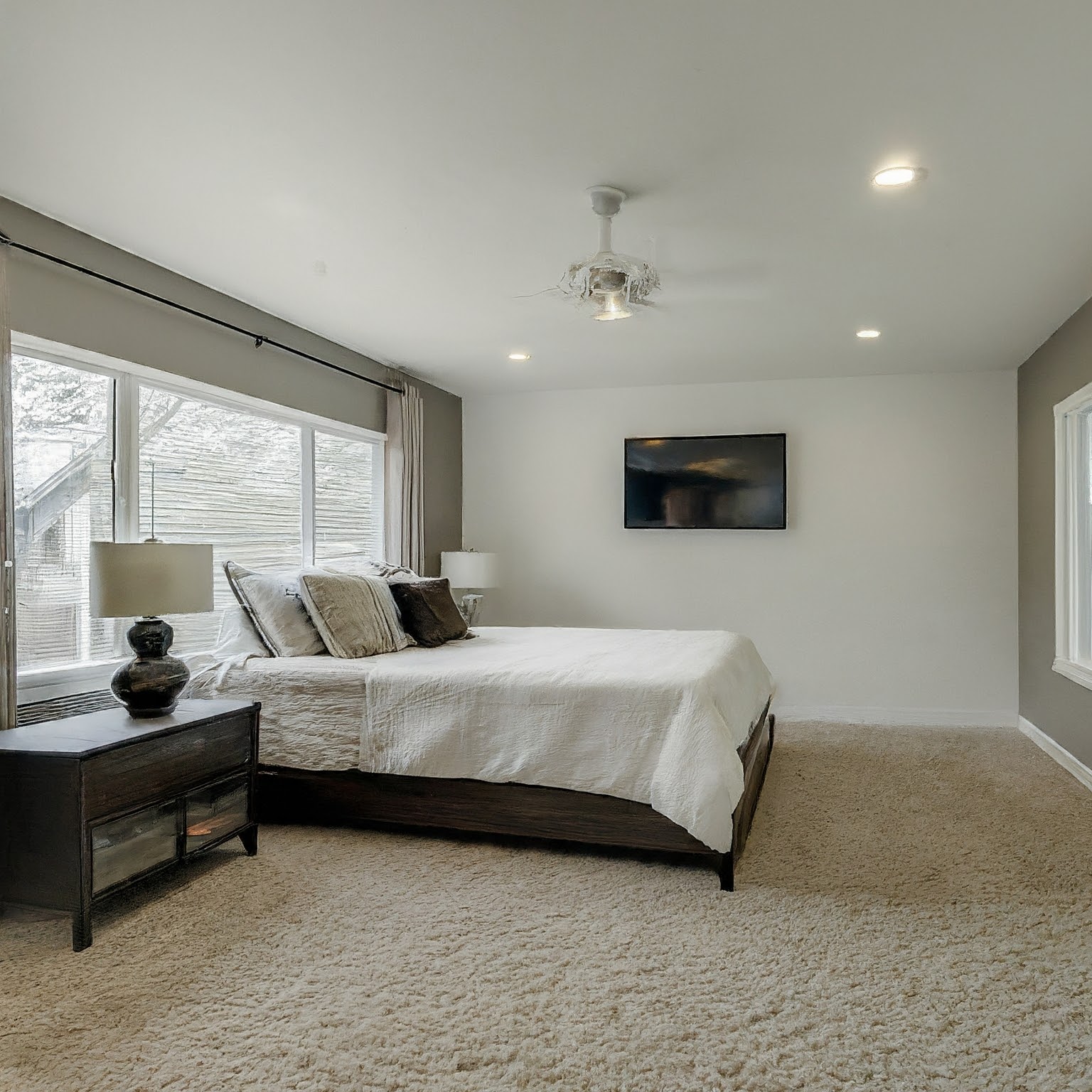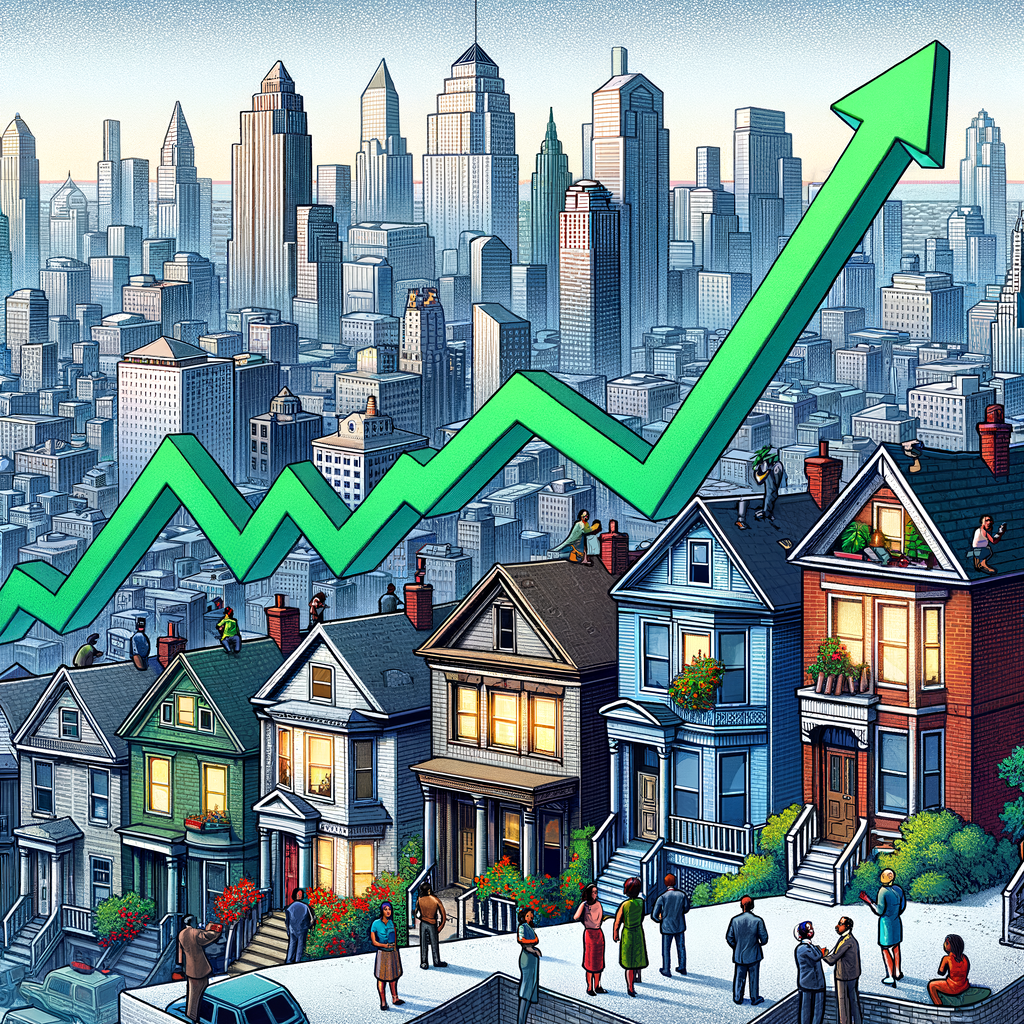Real Estate
Expert Tips on How to Increase the Value of Your Home Through Smart Renovations

Introduction
Are you considering renovating your home but unsure of where to start? Look no further than this blog post! We’ve compiled expert tips on how to increase the value of your home through smart renovations. With our guidance, you can transform your space into a stunning and valuable asset that will impress potential buyers or simply make it more enjoyable for you and your family. Whether it’s updating appliances or revamping the bathroom, we’ve got you covered with innovative ideas that are sure to elevate your living experience. So let’s dive in and get started on creating the home of your dreams!
Kitchen Renovations
When it comes to renovations that increase home value, the kitchen is king. A well-designed, stylish kitchen will not only make your home more desirable to potential buyers, but can also add significant value to your property.
If you’re planning a kitchen renovation, here are a few tips to keep in mind:
1. Focus on functionality: A functional kitchen layout is crucial for a comfortable and efficient cooking space. Make sure your design takes into account the workflow of meal preparation, and includes plenty of storage for pots, pans, and other cooking essentials.
2. Consider the latest trends: Keep your kitchen design up-to-date with the latest trends. Buyers will be looking for a space that feels modern and stylish, so incorporating some current trends will help increase your home’s value.
3. Don’t skimp on quality: When it comes to appliances, countertops, and other materials, be sure to choose high-quality items that will stand the test of time. Cheap materials may save you money upfront, but they’ll likely need to be replaced sooner than higher-quality options— costing you more in the long run.
4. Invest in professional help: Unless you’re a experienced contractor yourself, it’s worth hiring a professional kitchen designer or renovator to help with your project. They’ll be able to advise on the best layout for your space, select materials that fit your budget and style preferences, and oversee the construction process from
Bathroom Renovations
Bathrooms are one of the most important rooms in a home, so it stands to reason that renovating them can have a big impact on resale value. But where do you start? And how can you be sure you’re making smart choices that will appeal to buyers?
Here are some expert tips on how to increase the value of your home through bathroom renovations:
1. Focus on the basics. When it comes to bathroom renovations, making sure the basics are in order is key. This means ensuring that plumbing and electrical systems are up to date and in good working condition. Buyers will be turned off by bathrooms that need work in these areas, so it’s important to make sure they’re taken care of before starting any cosmetic updates.
2. Keep it neutral. When choosing finishes and fixtures for your bathroom renovation, it’s best to stick with neutral tones and classic styles. This will help appeal to a wider range of buyers and ensure that your bathroom feels timeless rather than dated.
3. Pay attention to detail. Small details can make a big difference in a bathroom renovation. Things like updated hardware, well-designed storage solutions, and high-quality materials will all be noticed by potential buyers and add value to your home.
4. Don’t forget about curb appeal. The exterior of your home is just as important as the interior when it comes time to sell, so don’t forget about curb appeal when planning your bathroom renovation. Things
Living Room Renovations
When it comes to home renovations, the living room is often one of the first spaces that comes to mind. After all, it’s typically the largest and most visible room in the house. But just because living room renovations are a popular choice doesn’t mean they’re always a good investment.
Before embarking on any type of home renovation, it’s important to do your research and understand the potential return on investment (ROI). With that in mind, here are a few expert tips on how you can increase the value of your home through smart living room renovations:
1. Start with a plan: As with any renovation project, it’s important to start with a clear plan and budget in mind. This will help ensure that your project stays on track and doesn’t end up costing more than you originally anticipated.
2. Keep it neutral: When it comes to paint colors and finishes, opt for neutral tones that will appeal to a wide range of buyers. Avoid anything too trendy or specific to your personal taste, as this could turn potential buyers off.
3. Update fixtures and hardware: Replacing outdated fixtures and hardware is a quick and easy way to give your living room an updated look. Stick with classic styles that won’t go out of fashion anytime soon for the best ROI.
4. Invest in storage: One of the biggest complaints buyers have about homes is lack of
Bedroom Renovations
When it comes to bedroom renovations, there are a few key things you can do to increase the value of your home. First, focus on creating a more spacious and open layout. This can be accomplished by removing unnecessary furniture and clutter, as well as by opening up wall space with strategic shelving or storage solutions.
Another great way to add value to your bedroom is through updated finishes and fixtures. Fresh paint, new flooring, and upgraded hardware can all make a big impact in terms of both aesthetics and resale value. And finally, don’t forget the power of good lighting! By installing additional lighting fixtures or even just making sure existing ones are in good working order, you can create a warm and inviting space that will be sure to impress potential buyers.
Outdoor Renovations
When it comes to increasing the value of your home, there are a number of factors to consider. One important factor is the condition of your home’s exterior. If you’re planning on selling your home in the near future, investing in some outdoor renovations can be a smart move. Not only will it make your home more appealing to potential buyers, but it can also help you boost its resale value.
If your home’s exterior is in need of a makeover, start by pressure washing the siding and trim. This will instantly freshen up the look of your home and make it more inviting. Once you’ve pressure washed, take a close look at your home’s trim and siding. If either is cracked, chipped, or peeling, they should be repaired or replaced. Replacing outdated or damaged siding is one of the most effective ways to increase the value of your home.
Another outdoor renovation that can pay off come resale time is a new coat of paint. A fresh coat of paint can do wonders for the appearance of your home’s exterior. When choosing a color scheme, opt for something neutral that will appeal to a wide range of buyers. You may also want to consider painting your front door a fun, eye-catching color like red or yellow. This is an easy and relatively inexpensive way to add curb appeal and boost your home’s value at the same time.
Conclusion
Renovations can be a great option to increase the value of your home. With these expert tips, you will know exactly what smart renovations to make in order to add maximum value with minimum effort. From easy aesthetics like painting and landscaping, through minor rooms upgrades such as adding an extra bathroom or updating kitchen appliances, all the way up to major projects such as converting the basement into a living space – there are plenty of smart investments that can give your home the boost it needs!
Real Estate
NYC Homeownership Financial Guide: Manhattan, Brooklyn Queens & Bronx

Navigating the Financial Landscape of Homeownership in New York City
Nestled amidst the towering skyscrapers and vibrant streets of Manhattan, Brooklyn, Queens, and beyond, New York City remains an iconic destination for those seeking urban living. However, amidst the city’s undeniable allure, prospective homeowners face a daunting challenge: the steep cost of acquiring a property. To provide clarity amidst this complex market, this comprehensive guide analyzes the financial requirements necessary to attain homeownership in each distinct NYC neighborhood.
Manhattan: The Apex of Urbanity and Expense
In the heart of Manhattan, where the pulse of global commerce beats, the pursuit of homeownership demands a substantial financial commitment. The median home price in the borough hovers around $1.2 million, with some neighborhoods commanding prices that surpass even this lofty figure.
To afford a median-priced home in Manhattan, individuals or couples should anticipate an annual household income of approximately $300,000. This income threshold allows for a manageable mortgage payment that aligns with the neighborhood’s average property taxes and maintenance costs.
Brooklyn: A Mosaic of Enclaves with Varied Affordability
Brooklyn, a sprawling borough across the East River from Manhattan, presents a more nuanced landscape for homebuyers. Neighborhoods within Brooklyn exhibit a wide range of affordability, influenced by factors such as proximity to Manhattan, transportation options, and local amenities.
In affluent areas such as Brooklyn Heights and Carroll Gardens, median home prices exceed $1 million, requiring a household income of at least $250,000. By contrast, neighborhoods like East New York and Brownsville offer more affordable options, with median home prices below $500,000. A household income of around $125,000 may suffice for homeownership in these less expensive neighborhoods.
Queens: A Thriving Hub with Neighborhoods on the Rise
Queens, the largest borough in NYC, boasts a diverse mix of established and emerging neighborhoods. Long Island City and Astoria have emerged as popular destinations for homebuyers seeking proximity to Manhattan without the astronomical price tag. Median home prices in these neighborhoods hover around $800,000, requiring a household income of approximately $200,000.
In contrast, neighborhoods like Jamaica and Far Rockaway offer more affordable options, with median home prices below $500,000. A household income of around $125,000 may suffice for homeownership in these areas.

Picture by: Google
The Bronx: A Resurgent Borough with Affordable Opportunities
The Bronx, often overlooked in conversations about NYC homeownership, offers a promising avenue for prospective buyers. Median home prices in the borough remain below $600,000, with some neighborhoods boasting prices under $400,000.
A household income of around $150,000 may provide sufficient financial footing to acquire a home in the Bronx. This income level allows for mortgage payments that align with the borough’s relatively lower property taxes and maintenance costs.
Beyond Price: Understanding the Financial Obligations of Homeownership
While home price serves as a primary determinant of affordability, prospective buyers must also factor in the ongoing financial obligations associated with homeownership. These include:
- Mortgage payments: Typically the largest monthly expense, mortgage payments cover the principal and interest on the loan used to purchase the property.
- Property taxes: Annual taxes levied by local governments to fund essential services such as schools, roads, and public safety.
- Maintenance costs: The upkeep of a home, including repairs, renovations, and general maintenance, can add up over time.
- Homeowners insurance: Protects the property and its contents from damage or loss caused by events such as fire, theft, or natural disasters.
- Co-op and condo fees: For those purchasing apartments in buildings with multiple units, monthly fees cover shared expenses such as maintenance, utilities, and amenities.
Strategic Planning for Homeownership
Achieving homeownership in New York City requires careful planning and strategic financial management. Prospective buyers should consider the following steps:
- Assess your financial situation: Determine your income, expenses, and debt obligations. Ensure that you have a stable income and a manageable debt-to-income ratio.
- Explore down payment options: Save for a down payment of at least 20% to avoid private mortgage insurance (PMI). Consider government-backed loans such as FHA or VA loans, which may require smaller down payments.
- Get pre-approved for a mortgage: Obtain a mortgage pre-approval to determine the maximum loan amount you can qualify for. This provides leverage when negotiating with sellers.
- Research the market: Conduct thorough research on different neighborhoods and property types to identify areas that align with your budget and lifestyle.
- Work with a reputable real estate agent: A knowledgeable real estate agent can provide guidance throughout the home-buying process, from finding properties to closing the deal.
Conclusion
The pursuit of homeownership in New York City is an ambitious endeavor, but with careful planning and financial discipline, it is achievable. By understanding the financial requirements of different neighborhoods and the ongoing obligations of homeownership, prospective buyers can navigate the complex landscape of the NYC real estate market
Real Estate
White Boxing for Home Sale: Pros & Cons

Is White Boxing Really the Best Way to Prepare a Home for Sale?
When preparing a home for sale, one of the most important decisions homeowners must make is whether or not to white box their property. White boxing, also known as “neutralizing” or “de-personalizing,” involves painting the walls white, removing personal belongings, and making other changes to create a more universal appeal to potential buyers. While white boxing can certainly have its benefits, it’s important to weigh the potential drawbacks before making a decision.
Benefits of White Boxing
- Create a blank canvas: White boxing allows potential buyers to envision themselves living in the home. By removing personal belongings and painting the walls a neutral color, buyers can more easily picture their own belongings and style in the space.
- Make the home feel larger: White walls and ceilings reflect light, which can make a home feel more spacious and airy. This is especially beneficial for smaller homes or homes with low ceilings.
- Appeal to a wider range of buyers: A white-boxed home has a more universal appeal, as it doesn’t cater to any specific taste or style. This can be particularly helpful in competitive markets where homes sell quickly.
Drawbacks of White Boxing
- Can be expensive: White boxing can be a costly endeavor, especially if it involves major renovations such as painting, flooring, and removing built-ins.
- Can be disruptive: White boxing can be a disruptive process, as it requires removing personal belongings and making changes to the home. This can be especially challenging for families with young children or those who work from home.
- Can make the home feel sterile: Some buyers may find a white-boxed home to feel impersonal and unwelcoming. It’s important to strike a balance between neutralizing the home and making it feel inviting.

Picture by: Google
Alternatives to White Boxing
If white boxing is not the right option for you, there are other ways to prepare your home for sale that can be less expensive and disruptive. These include:
- Declutter and depersonalize: Remove excess belongings, personal photos, and other items that could make the home feel cluttered or cluttered.
- Make minor repairs: Fix any small issues, such as leaky faucets, chipped paint, or broken appliances.
- Update lighting: Replace outdated light fixtures with newer, more modern ones.
- Stage the home: Hire a professional stager to arrange furniture and accessories in a way that highlights the home’s best features.
Ultimately, the decision of whether or not to white box your home is a personal one. There is no right or wrong answer, and the best approach will vary depending on your individual circumstances and goals. If you’re considering white boxing, it’s important to weigh the potential benefits and drawbacks carefully before making a decision.
Here are some additional tips for white boxing your home:
- Start early: White boxing can be a time-consuming process, so it’s important to start early to avoid any last-minute stress.
- Hire a professional: If you’re not comfortable doing the work yourself, hire a professional painter and contractor to help you.
- Use quality materials: Don’t skimp on the paint or other materials you use. Using high-quality materials will help your home look its best and make a good impression on potential buyers.
- Don’t overcrowd the rooms: When staging your home, don’t overcrowd the rooms with furniture and accessories. The goal is to create a sense of space and flow.
- Add personal touches: While it’s important to neutralize your home, you can still add a few personal touches to make it feel more welcoming. For example, you could add a vase of fresh flowers or a piece of artwork that reflects your style.
By following these tips, you can create a white-boxed home that is both appealing to potential buyers and a reflection of your own personality.
Real Estate
Home Prices Soaring in 10 Surprise Cities: Trends & Insights

Introduction
The real estate market in the United States has been experiencing a period of unprecedented growth in recent years, with home prices rising to record highs in many cities across the country. While large metropolitan areas like New York City, San Francisco, and Los Angeles have traditionally been at the forefront of this surge, a number of smaller cities have emerged as unexpected hotspots, defying expectations and surprising potential buyers. This article will explore the ten cities where home prices are rising the fastest, shedding light on the factors driving this growth and examining the potential implications for homebuyers, investors, and the housing market as a whole.
Methodology
Our analysis is based on data from the National Association of Realtors (NAR), which tracks home price changes in metropolitan areas across the United States. We identified the ten cities with the highest percentage growth in median home prices from December 2021 to December 2022, using the NAR’s existing home sales data. The percentage change in median home prices was calculated as the difference between the median price in December 2022 and the median price in December 2021, divided by the median price in December 2021.
Top 10 Cities with the Fastest-Rising Home Prices
- Sarasota, Florida (43.4% growth)
- Lakeland, Florida (39.1% growth)
- North Port, Florida (38.8% growth)
- Punta Gorda, Florida (37.1% growth)
- Cape Coral, Florida (35.6% growth)
- Port St. Lucie, Florida (34.9% growth)
- Myrtle Beach-Conway-North Myrtle Beach, South Carolina (33.4% growth)
- Charleston, South Carolina (32.6% growth)
- Boise, Idaho (31.1% growth)
- Ocala, Florida (30.3% growth)
Factors Driving the Surge
Multiple factors have contributed to the rapid rise in home prices in these cities, including:
- Population growth: Many of these cities are located in states that have experienced significant population growth in recent years, driven by a combination of migration from other parts of the country and international immigration. As more people move into these areas, the demand for housing increases, putting upward pressure on prices.
- Low interest rates: The Federal Reserve’s low interest rate policies have made it cheaper for people to borrow money to buy homes. This has stimulated demand, particularly in markets where affordability was previously a concern.
- Limited supply: In many of these cities, the supply of available homes has been unable to keep pace with the increase in demand. This has created a competitive environment where buyers are willing to pay higher prices to secure a home.
- Lifestyle amenities: These cities offer a range of desirable lifestyle amenities, such as beaches, golf courses, and cultural attractions. This has made them popular destinations for retirees, second-home buyers, and individuals looking to relocate from more expensive metropolitan areas.
- Investor activity: Investors have also played a role in driving up home prices, particularly in areas with strong rental markets. In some cases, investors have purchased homes as rental properties, reducing the supply of homes available for purchase by owner-occupants.

Picture by: Dalle
Implications for Homebuyers and Investors
The rapid rise in home prices is having significant implications for homebuyers and investors in these markets:
- Affordability concerns: For homebuyers, the high prices are making it increasingly difficult to afford a home in desirable areas. First-time homebuyers may face particular challenges in competing with experienced buyers and investors.
- Investment opportunities: For investors, the rising prices present potential opportunities for appreciation and rental income. However, it is important to carefully consider the risks and potential for market fluctuations before investing in any real estate market.
- Market volatility: The rapid price increases in these cities raise concerns about potential market volatility. If interest rates were to rise significantly, demand could cool and prices could stabilize or even decline.
Long-Term Considerations
While the current boom in home prices may persist for some time, it is important to remember that real estate markets are cyclical. Prices can go down as well as up, and it is not always wise to time the market perfectly. For homebuyers, it is crucial to carefully consider affordability and long-term financial goals before making a purchase. Investors should conduct thorough due diligence and seek professional advice before making investment decisions.
Conclusion
The real estate market in the United States continues to evolve, with home prices rising at a rapid pace in many cities. While traditional metropolitan areas have always been magnets for homebuyers, a new wave of “surprise cities” has emerged, offering a unique blend of affordability, lifestyle, and growth potential. However, this surge in prices comes with challenges for both homebuyers and investors. Carefully considering affordability, market risks, and long-term goals is crucial for navigating this dynamic market. Whether you’re looking for a new place to call home or a promising investment opportunity, understanding the factors driving the market and conducting thorough research will be essential for making informed decisions in this ever-changing landscape.
-
Business12 months ago
Cybersecurity Consulting Company SequelNet Provides Critical IT Support Services to Medical Billing Firm, Medical Optimum
-
Business1 year ago
Team Communication Software Transforms Operations at Finance Innovate
-
Business1 year ago
Project Management Tool Transforms Long Island Business
-
Business11 months ago
How Alleviate Poverty Utilized IPPBX’s All-in-One Solution to Transform Lives in New York City
-
health1 year ago
Breast Cancer: The Imperative Role of Mammograms in Screening and Early Detection
-
Sports1 year ago
Unstoppable Collaboration: D.C.’s Citi Open and Silicon Valley Classic Unite to Propel Women’s Tennis to New Heights
-
Art /Entertainment1 year ago
Embracing Renewal: Sizdabedar Celebrations Unite Iranians in New York’s Eisenhower Park
-
Finance1 year ago
The Benefits of Starting a Side Hustle for Financial Freedom































